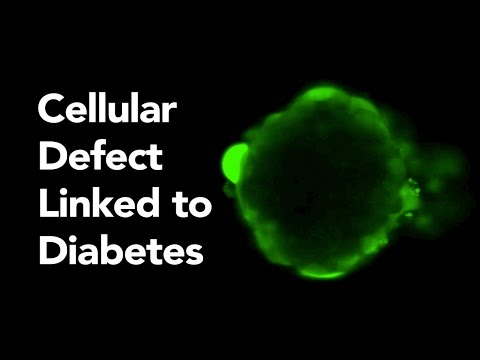September 2004 - A new study by researchers at Joslin Diabetes Center sheds light on the key mechanisms by which new pancreatic beta cells normally form in response to insulin resistance. These findings may some day help researchers devise ways of staving off full-blown diabetes.
Insulin resistance is a condition in which the body needs increasing amounts of insulin to function properly, including keeping blood glucose levels in the normal range. It is a major contributor to type 2 diabetes, obesity and the metabolic syndrome, which affect nearly one-quarter of the American population.
For years, the body compensates for insulin resistance in order to delay the onset of clinical type 2 diabetes: The pancreas secretes more insulin and, in fact, more insulin-producing beta cells form within the pancreas. This formation of new beta cells is the focus of intensive research: Which cells give rise to these new beta cells and how? (Some researchers, for example, theorize that the new cells are derived from immature ductal cells--the cells that line the ducts of the pancreas.) And what signals this replication of beta cells to occur?
To study these questions, Rohit N. Kulkarni, M.D., Ph.D., Jonathon N. Winnay, and C. Ronald Kahn, M.D., of Joslin Diabetes Center in Boston; Ulupi S. Jhala Ph.D., of The Whittier Institute of the University of California in La Jolla, Calif.; Stan Krajewski Ph.D., at the Burnham Institute in La Jolla; and Marc Montminy M.D., Ph.D., at The Salk Institute for Biological Studies in San Diego, Calif., studied this compensatory growth in two different genetically engineered animal models of insulin resistance called IR/IRS-1 mice and LIRKO mice. Dr. Kahn is the Mary K. Iacocca Professor of Medicine at Harvard Medical School.
The results of immunohistochemical staining suggest that these new beta cells are not derived from duct cells. Rather, the beta-cell growth in insulin-resistant states occurs by "epithelial-to-mesenchymal transition," a mechanism in which cells take on a more primitive form and begin replicating. It is possible that the response originates from potential beta-cell stem cells, a more primitive cell that has yet to differentiate into a beta cell. They also showed that insufficiency of a protein called PDX-1, which is critical for the development of pancreatic islets that contain beta cells, limited the growth response in insulin-resistant states--suggesting that PDX-1 likely plays an important role in regulating this growth.
Continue Reading Below ↓↓↓
The results were published in the September 2004 issue of The Journal of Clinical Investigation. The research was funded by the National Institutes of Health, the Juvenile Diabetes Research Foundation Center for Islet Transplantation at Harvard Medical School, the Beta Cell Biology Consortium and the Larry Hillblom Foundation.
"Our paper clearly demonstrates a potential mechanism for beta-cell growth during insulin resistance, which in turn, occurs as a normal protective response to delay the onset of type 2 diabetes in obese and other susceptible individuals," says Dr. Kulkarni, an Investigator in the Cellular and Molecular Physiology Section at Joslin, Assistant Professor of Medicine of Harvard Medical School, and the lead and corresponding author of the study. "Using two different animal models of insulin resistance, we have identified the key players that are involved in this crucial compensatory response. Dissecting the pathways that regulate the process of epithelial-to-mesenchymal transition will have therapeutic implications for both type 1 and type 2 diabetes. For example, modulating one or more proteins involved in this critical transition process may allow us to enhance the ability of beta cells to replicate in the body or to formulate methods to expand the formation of new cells as a source for transplantation in type 1 diabetes."
There are two major types of diabetes. An estimated 800,000 Americans have type 1 diabetes, in which the pancreas is unable to produce insulin. People with type 1 diabetes must take daily insulin injections to survive. An estimated 18 million Americans have type 2 diabetes, in which the pancreas doesn't produce enough insulin and/or the body is unable to use insulin properly (insulin resistance). Poorly controlled diabetes can lead to a host of complications, including heart attacks, strokes, blindness, kidney failure, blood vessel damage and nerve damage.
Source: Joslin Diabetes Center











